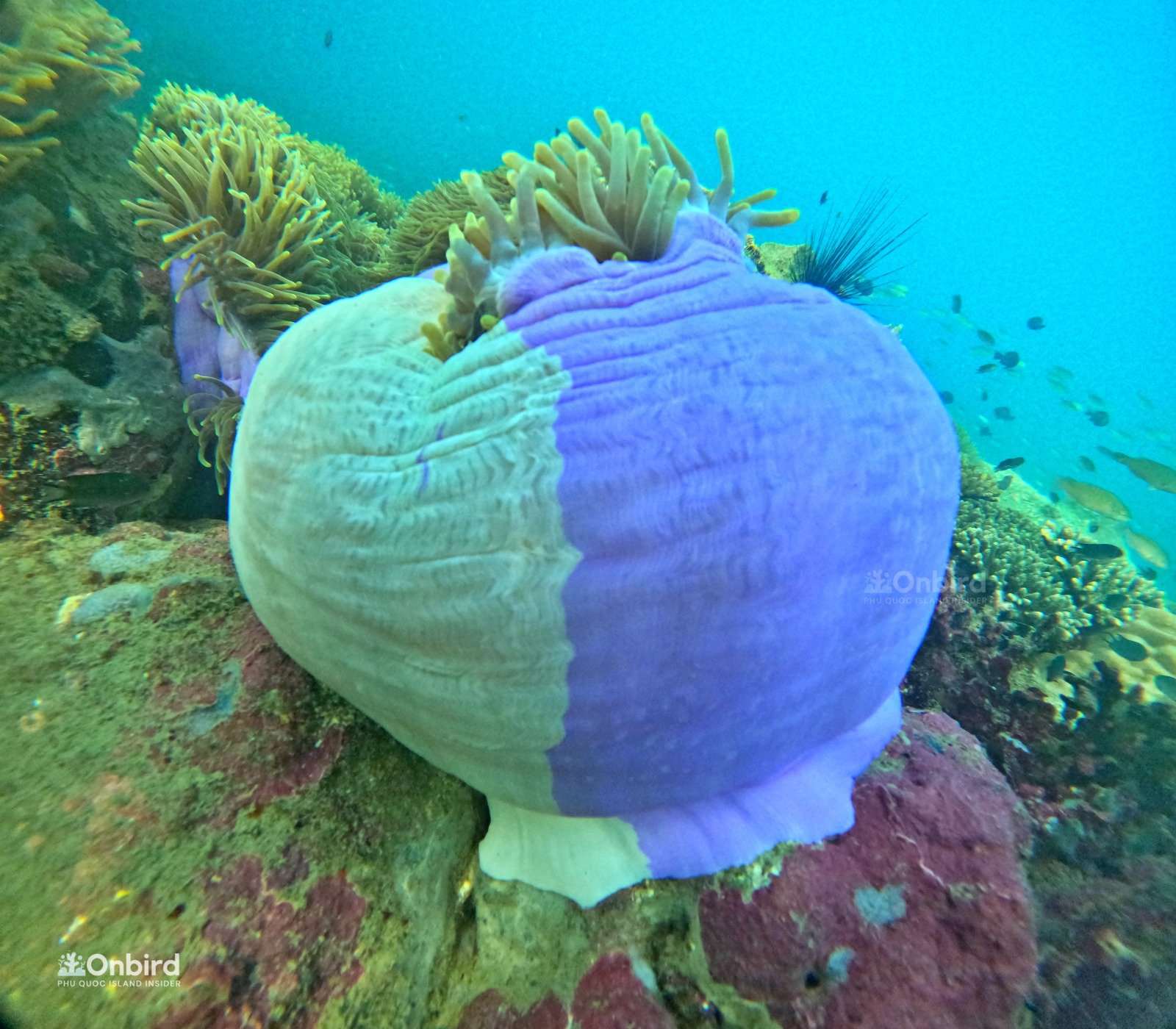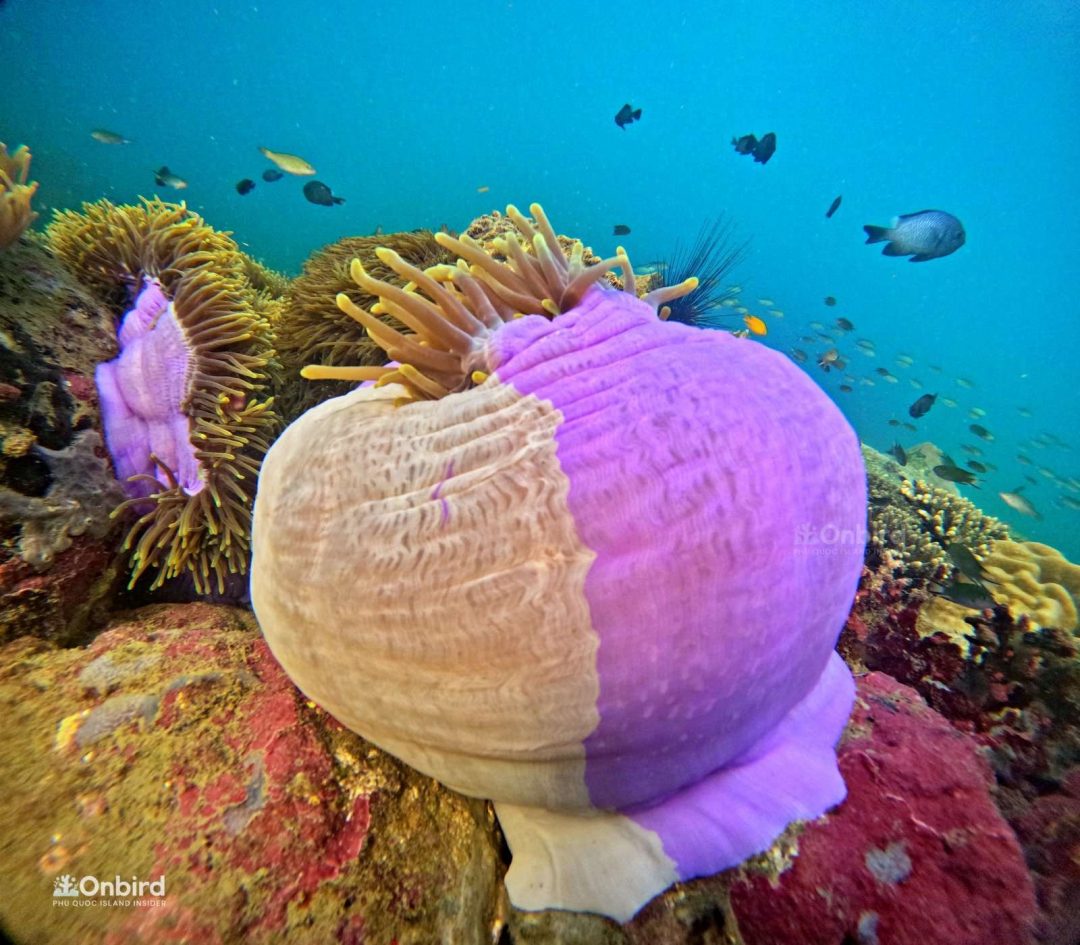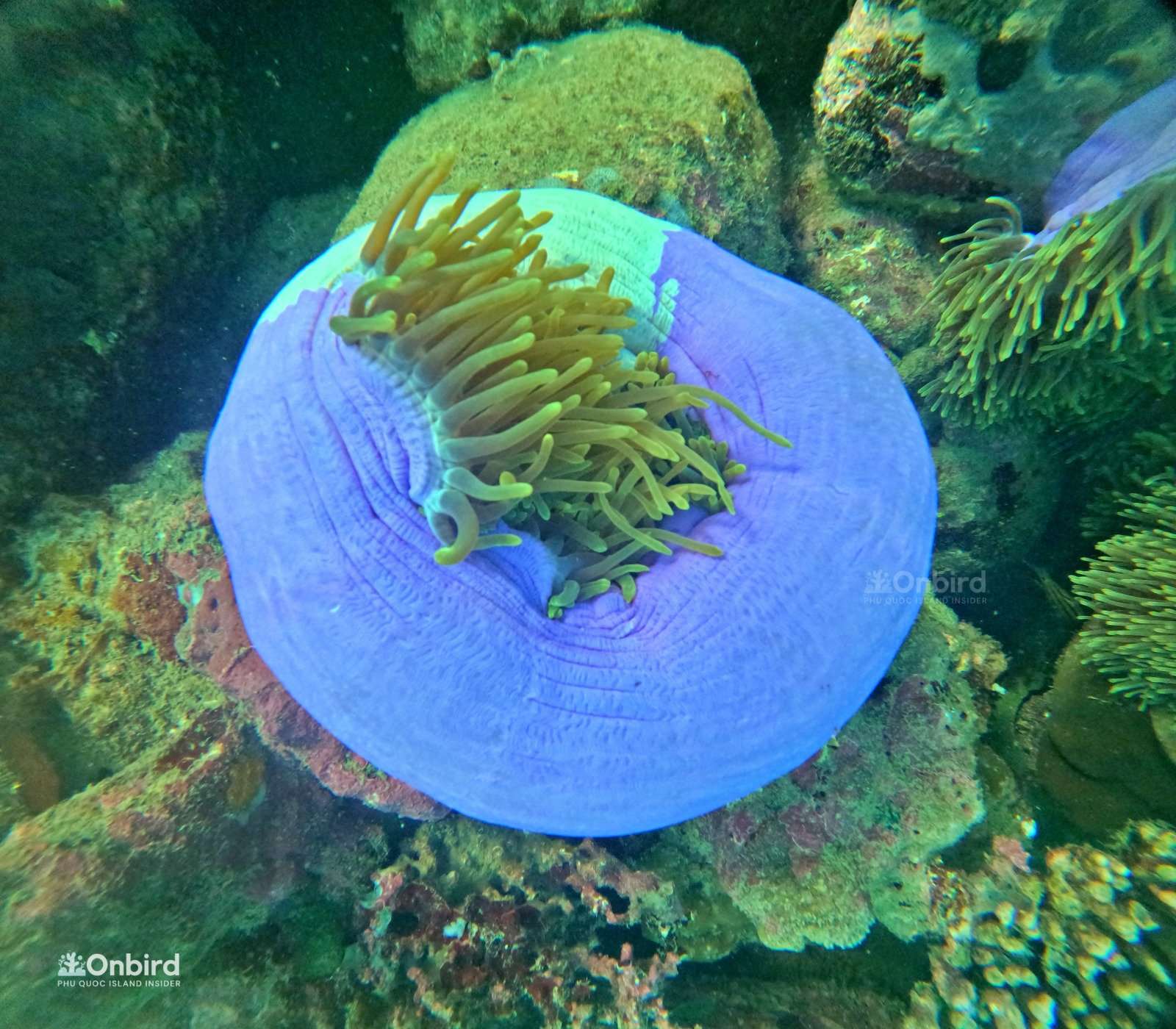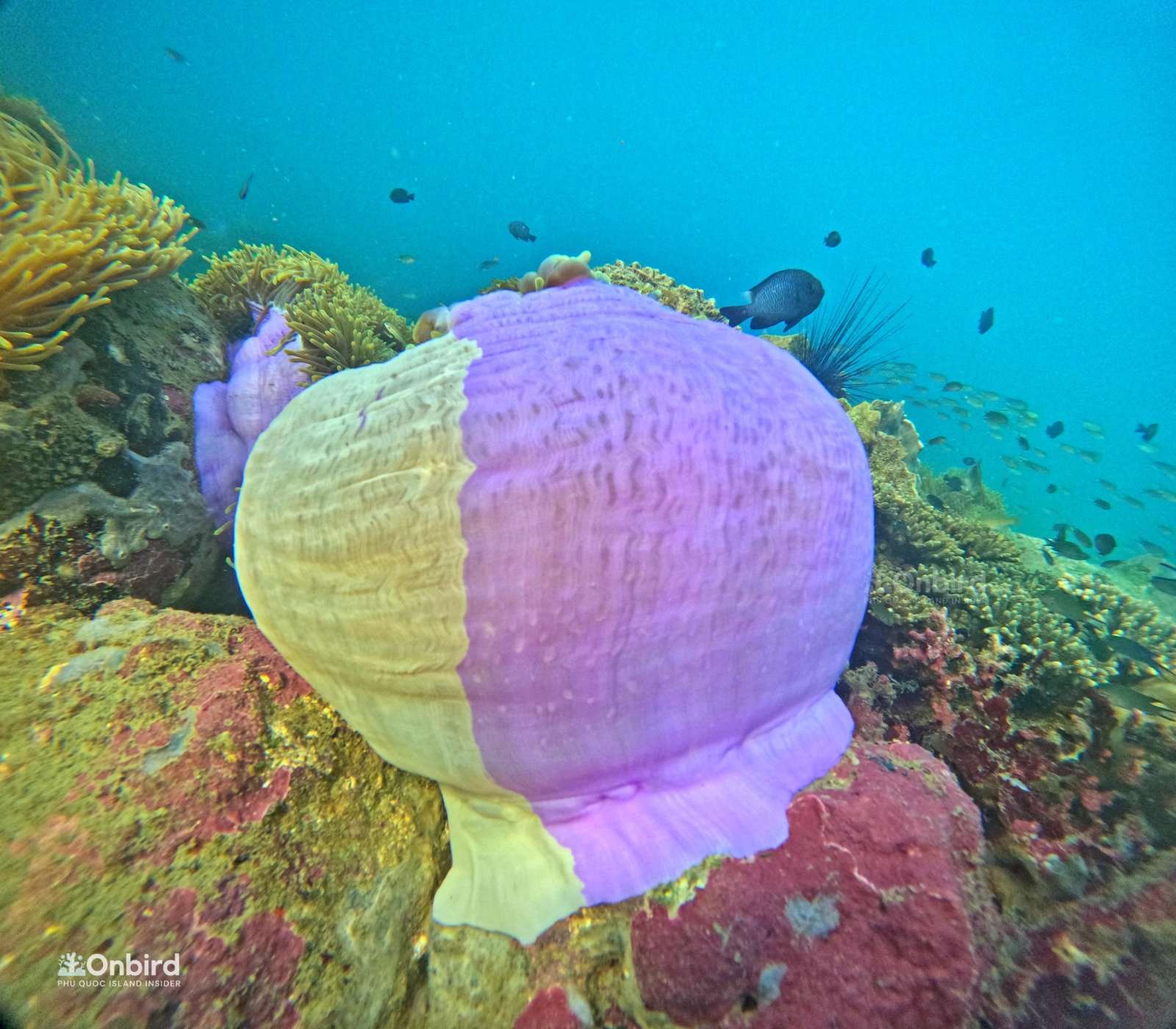From OnBird’s observations about anemones, we found an interesting fact that an anemone can have 2 different colors on its base.
The left part of the base is ivory white mainly because it lies down against the rock when the anemone is in an open state, reaching out its tentacles. This location offers little exposure to sunlight and therefore, there are no algae to synthesize chlorophyll and photosynthetic color pigments. You may not know that Zooxanthellae algae live in symbiosis with marine invertebrates such as corals, sea slugs, giant clams, and sea anemones and they help create color in the corals and the species they live in symbiosis with.
On the other hand, the right part of the anemone is located on the rock surface where coral grows. When this part of the anemone’s sac opens, it swings and is pushed by the water instead of pressing or sticking to the rock like the left part. Therefore, it remains open and exposed to light, with photosynthetic algae clinging to it, resulting in its color. For instance, a cluster of sea anemones behind it opens its base, and the suspended part of the bag is exposed to light.

Contact us to get further advice about the best dates for your snorkel adventure in Phu Quoc Island!
[HÀNH TRÌNH GHÉP] – KHÁM PHÁ SAN HÔ TỰ NHIÊN VÙNG LÕI NAM ĐẢO PHÚ QUỐC (Tối đa 8 -9 khách)



 Tiếng Việt
Tiếng Việt

